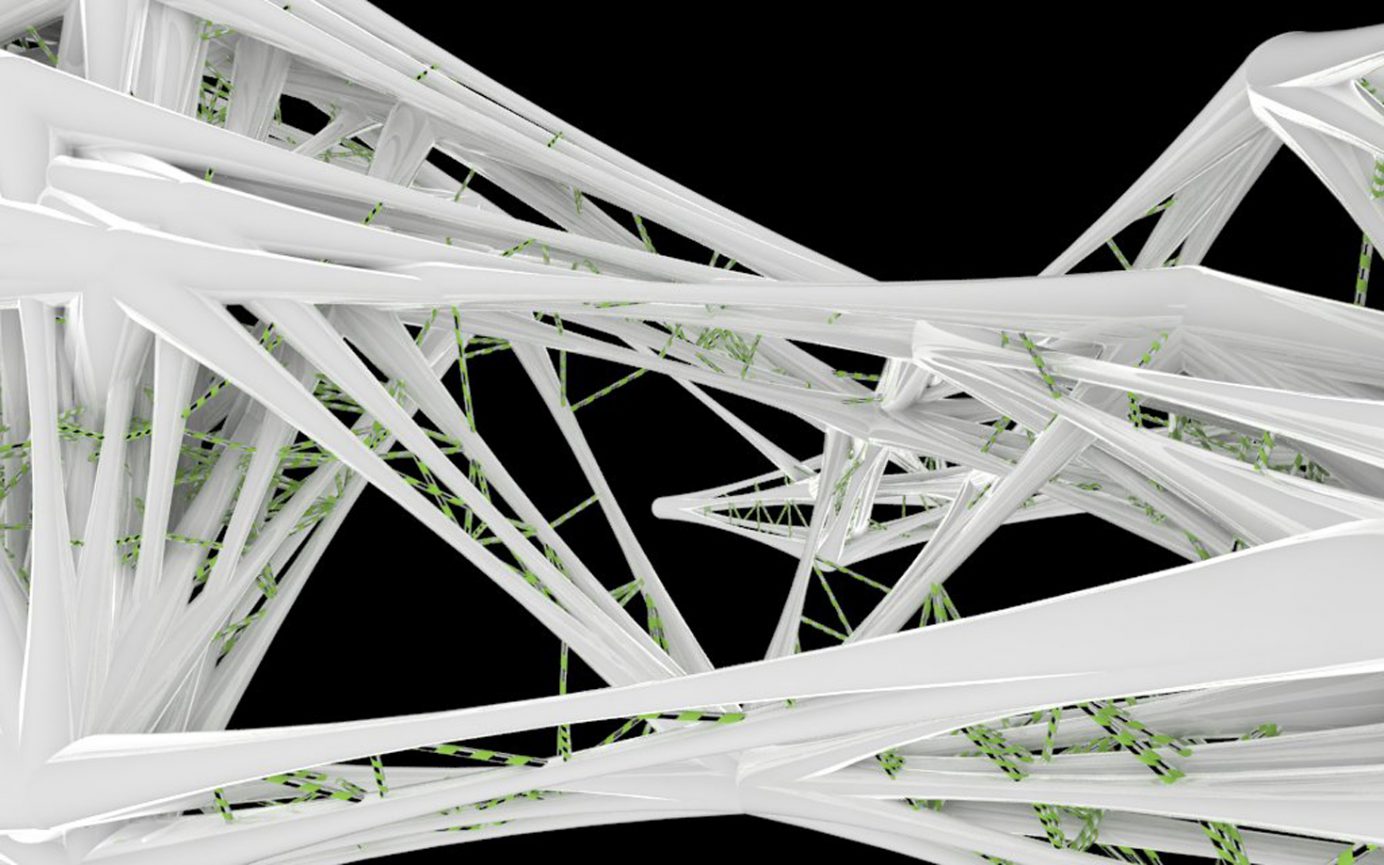DIGITAL LIBRARY ‘Codes in the Clouds’ is a research by design studio. Research by design in general and in particular means that we predominantly test how architectural structures can learn and be influenced by scientific and natural findings in the combination of geometry, material behavior and structure. The studio is concerned with the exploration of computation to provoke an architectural …
Codes in the clouds VIII – Topology frequencies
TOPOLOGY FREQUENCIES: post-digital urban habitat, taxonomy and differentiation Students: Shady Abdulabdelazeem, Natalie Belous, Mariana Diaz, Alan Dzhibilov, Duane Harry, Kamila Kalitova, Katarzyna Pis, Jekaterina Prohinam, Yamen Rael, Tim Shapkin Fifty years after the rise and fall of Japanese Metabolism the studio investigated into a rethinking of the urban tabula-rasa habitat activated by dynamic patterns of behavior, furnished by an understanding …
Codes in the clouds VI – Noo Topia
‘The architect is no longer a designer of discrete objects, matter and space, but a designer of systems with complex components and multi-layered relationships, and we have started handling the scripts, but we are still very far away from thinking the protocols, from defining the definitions for the tools needed.’ LCW The flesh of architecture in the twenty-first century is …
Codes in the clouds V – indicium taxonomy motus
TOPIC ‘Imagine the possibilities of being able to predict the intricacies of an evolving city. The capability to compute algorithms for not only a standard city model, but to include variable sets specific to a single city. CITC V is looking at the possiblity of using real time streaming data of human movement through GIS information to develop algorithms, which …
Codes in the clouds IV – Atrophic re-topography
TOPIC CITC IV looking at the architecture of masquerade, of the ornate veil; the architecture of reproduction and the [t]issue of Atrophic [RE]Topography. The Term ‘atrophic’ mainly is used in medicine and biology, however the material built fabric as well as the understanding of it is subject to atrophy over the centuries. We will cross over the boundary of first …





